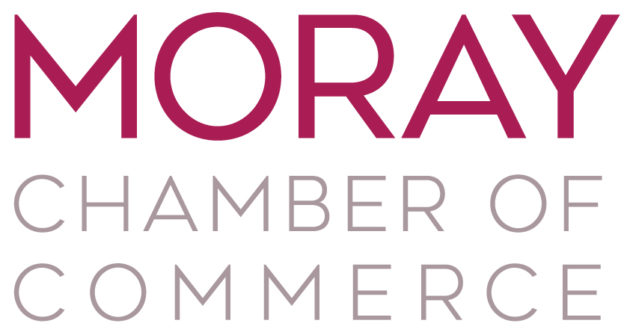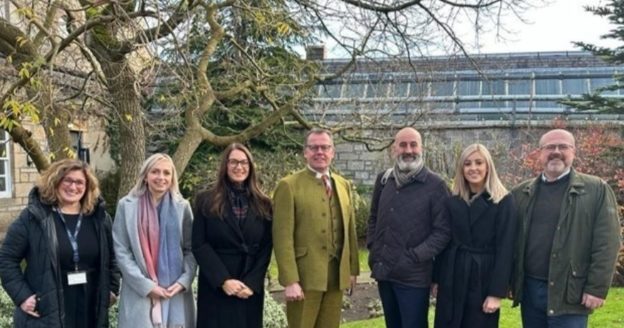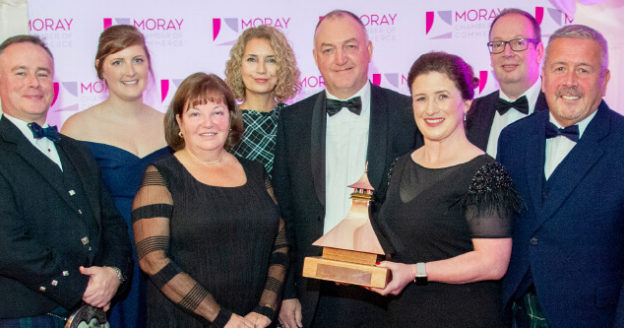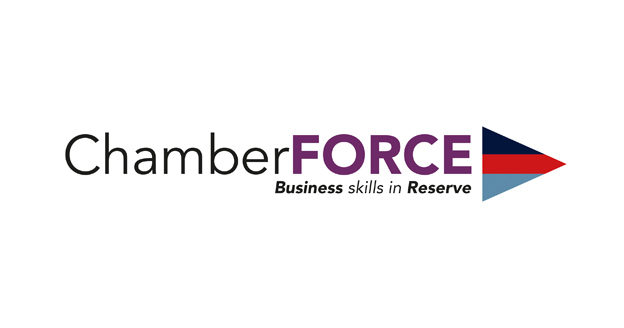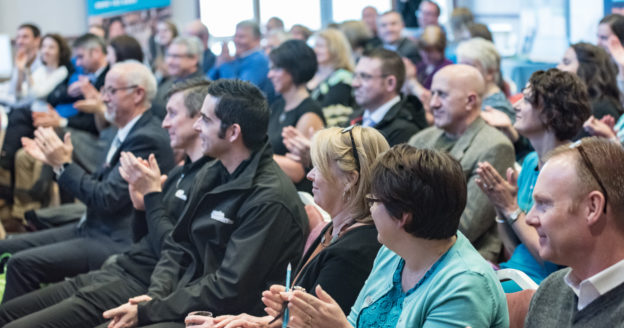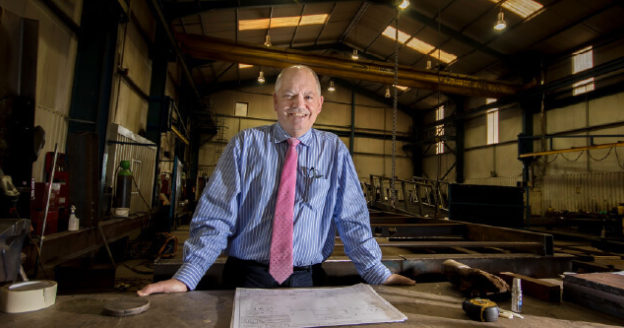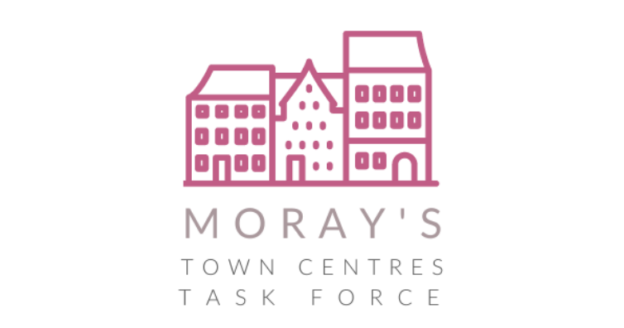Chamber News
Balfour’s partnership with Motts, AtkinsRéalis and Jacobs seeks to set trends for optimal design process
20 June 2024 • Sarah Medcraf
BY ROB HAKIMIAN

Balfour Beatty’s Strategic Design Partnership (SDP) with Mott MacDonald, AtkinsRéalis and Jacobs has made significant strides in optimising infrastructure design processes, senior figures from the firms have told NCE.
The SDP was initially formed in 2017 by Balfour Beatty as contractor with Mott MacDonald, AtkinsRéalis and WSP as pre-appointed design consultants. These firms were tasked with engaging collaboratively with a new level of openness to find new and improved ways of delivering design works, improving areas such as value engineering, cost effectiveness and health and safety.
A year later, the SDP achieved the IS044001 accreditation for collaborative business relationships.
When Balfour Beatty re-tendered the SDP contract, Mott MacDonald and AtkinsRéalis re-signed, while WSP exited and Jacobs joined.
In the year since then, the SDP has gone from strength to strength.
“I think the ambition has grown,” Balfour Beatty technical director Ian Askew told NCE. “It’s much more about developing optimal design solutions quicker and less about the transaction of design; it’s about the output of design.
“Because 70% of construction cost is the shadow that design casts, so if we can hit optimal design solutions quicker then I think it’s positioning all the businesses well for the future.”
Mott MacDonald portfolio director and key account leader (Balfour Beatty) Steve Smith has been involved in the SDP since the beginning and says the aim has always been to answer the question “what can we do to really change the way we work together?”
What does the SDP do?
Smith describes countless experiences of going backwards and forwards with contractors to continually change designs. “We realised there must be a better way of doing this,” he said. “We’ve spent a lot of effort in the last 12 months really trying to think about how we can provide a more efficient design process to allow Balfour Beatty to build more efficiently and safely and in a more sustainable fashion with all the right sorts of outcomes.”
AtkinsRéalis highways operations director David Jenkins added that the SDP is “trying to improve the productivity of the industry” and is achieving this by “being able to collaborate and bring the design and construction processes much more closely aligned”.
“From a design and build perspective, it means designing in line with the construction methodology that the contractor wants to use,” Jenkins continued. “The focus is very much on early engagement that enables that to happen effectively.”
The SDP works by having monthly steering meetings with all four partners and there are various working groups around four themes that meet more regularly.
The four core areas that the SDP is working around are sustainability, modern methods of construction (MMC), core markets and measuring design through KPIs and other metrics.
“Each partner has invested around 1,100 hours in the first year on each of those strategic themes, so it’s been a big investment,” Askew said. “And with a five-year relationship that gives you opportunities to integrate like never before.”
Early Careers Network
A part of this integration is the Early Careers Network where young engineers from across the businesses engage and collaborate. “They run hackathons on things like MMC versus integration – and we’ve got one next month that’s sustainability themed,” Askew said.
“You can see they work seamlessly across the partnership – there’s not a Motts pocket or an AtkinsRéalis pocket – which is maybe the way the future needs to look, with much deeper integration between organisations rather than the sort of fragmented behaviours we see out in the market.”
Smith agreed, saying he’s been impressed by natural their collaborative skills are.
“They do some fantastic work and the energy that they bring to what is quite a senior group is quite astonishing,” he said. “We regularly have them in attendance in our steering group meetings and they will report back on processes.
“It helps them develop their own personal network of contacts within the industry and opens up opportunities for secondments between businesses.”
Developing processes and frameworks
While the SDP is about the collaboration between the four firms, Balfour Beatty also sometimes has meetings on a bipartite basis with one of the design partners to discuss specific contracts.
“The partnership is not trying to run the individual projects, that is a one level business as usual,” Jenkins said. “But it is providing an absolute framework within which to do that.”
One of the first tasks was for the partners to map out their workflows to show each other and it was discovered that they were all quite similar. There were several “touch points” identified that presented “wonderful opportunities for integrating how we work, developing digital tools and digital systems in order to bring something truly different to the market”, Askew said.
While the processes were similar, the terminology was often different. “Actually having a common way of describing things and measuring the same metrics is really useful,” Jenkins said.
“We’ve recognised that we can achieve much more together than we can as individual businesses by pooling a knowledge on things like MMC,” Askew said. “There’s experts around the partnership that we’re bringing together and working on things like performance metrics for off site construction, which I think as an industry we’ve really struggled with.
“I think we’re making really great headway as a group in terms of defining what parameters we should be measuring to demonstrate the value from offsite construction, which are completely fresh.”
The partners are also excited by other metrics that are being developed by the SDP to measure design in order to improve the process.
“One example is we looked at design change and request for information from the contractor to the designer – our behaviour [as the contractor] was like everything’s urgent, we want everything in three days,” Askew said. “But when you think about that, it puts an enormous pressure [on the project] and we’re not distinguishing between what’s really important and what’s less important, because our default is we want it immediately.”
Askew said the metrics are things like causation of change (whether from client or internally) and the length of time given to make the demanded change.
“By putting metrics around that behaviour, you can start having discussions with a team to change behaviour to something that’s going to be better for Balfour Beatty as a client,” Askew said. “I think that’s really important and we had not even thought about this until we started bringing transparency to behaviours through the metrics.”
Being transparent about this has also enabled the partners to align aspects like terminology that can effect change. Askew gave the example of the world ‘buildability’.
“Often that means different things to different people in different projects – is it because there’s information missing, is it because you’ve come up with a way that’s easier to build,” he said. “The whole thing around terminology is super important, especially when you’re labelling data and information.”
In this way, the SDP is working towards a consistent way of working with Balfour Beatty so that it knows what to expect. “Balfour will know how it’s going to get the information and what it’s going to look like,” Smith said.
He continued: “What [the SDP] has done for me is helped me understand contractors as clients – they’re very different animals to a design house. They work on different scales of revenue with different scales of margins and once you start understanding that you understand why they sometimes get a bit agitated about certain things.
“If you can take away the agitation and some of the friction it will become a more efficient and effective design process and a happier relationship.”
To that end, the SDP has developed standard forms of contracts for work with Balfour Beatty.
“We have in effect templates that allow us to [enter work together] fairly quickly where a lot of the common terms have been agreed in advance and we have rate cards that are the starting points for negotiations on the fees side,” Jenkins explained. “We have some examples where we’ve been able to get into contract within a few days when a task is identified; something that may have taken weeks previously can now be done quite quickly.”
On a project level
Talking about specific projects that have benefitted from the SDP, Smith says there have been “quite a few” but highlights an “unusual” one for Balfour Beatty Living Spaces in Southampton.
“The guys needed, on short notice, some additional highways resource support and within a week we had four of our engineers from the south of England seconded to their offices in Southampton,” he said. “While it’s not a billion-pound project, it was because we had those relationships and common agreements in place that it all happened quite quickly. It was for about six months, just to full a little bit of a resource gap.”
Jenkins emphasised that the SDP work is in play on longer-term work for the likes of National Highways, where AtkinsRéalis is supporting Balfour Beatty on projects like Lower Thames Crossing the M25 junction 10 improvement scheme.
“Equally, it’s about the smaller scale stuff where it’s a few weeks’ input to support a tender, providing some key resource,” he added. “I think it gives flexibility and resilience, particularly for Balfour Beatty, in terms of being able to resource those things at short notice.”
Askew took a wider-angle view of how the SDP is helping Balfour Beatty’s projects. “The learning from the various expert groups has been translated into changes in our management processes,” he said. “Some of these tools that were co-created [by the SDP] are now mandated for every project, so I think it’s having a really big impact.”
Looking ahead
Thinking about where the SDP will go in the coming years, Askew said its “positioning our business for the future”.
“That future involves much deeper integration and stripping out waste through having much more integrated processes to develop those optimal design solutions,” he added.
Jenkins agreed. “It’s not just about following the trends in the industry – it’s actually about how can we set them; how do we get ready for where our industry will be in three years, in five years?
“What is the impact of artificial intelligence going to be, for example. That’s the sort of thing we can now work out together and then be in a position to respond to the challenges and opportunities that will be thrown up in the coming years.”




